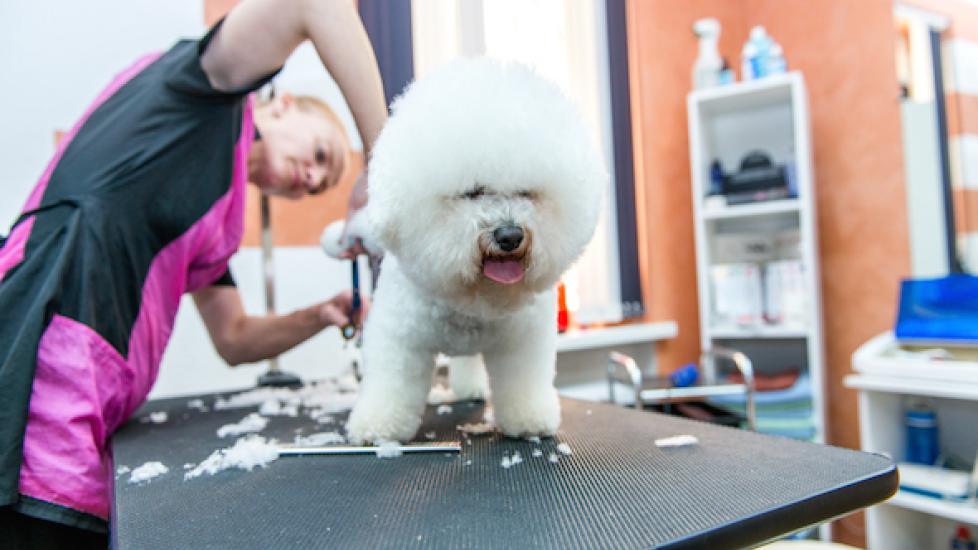How to Become a Dog or Pet Groomer
By T. J. Dunn, Jr., DVM
Pet groomers, more than any other group of pet health care professionals, fill a very unique niche in enhancing pet health. In fact, it requires certain attributes not required by veterinarians, trainers, breeders, pet shop owners, kennel operators and pet food retail salespeople.
How to Become a Dog or Pet Groomer
The first step to becoming a dog or pet groomer is to research. You should research the different styles of grooming for different breeds as well as programs in your area that offer certifications in pet grooming. While certification is not always required, these programs can help you learn the basics of pet grooming and will make you stand out when looking for jobs.
The real learning comes from experience, however. Getting an internship with a groomer or working as a groomer's assistant will give you the hands-on experience you need to hone your grooming skills.
To be a successful pet grooming professional you must be hands-on, observant and effective, all while patiently controlling the pet. Of course there's a huge responsibility you must bear not only to be the best groomer you can be but also to be a healthcare advocate on behalf of the pets with whom you work. The time you spend with the animal will also enable you to judge their physical and mental attitude.
Teaming Up with a Veterinarian
Every day in my small animal practice the groomer (she happened to be an independent contractor, not my employee, so I refrained from calling her "my" groomer!) would call me in to the grooming room to point out something on the pet that needed attention. Often she had discovered some subtle health problem that had evolved since the last time I saw the pet.
In addition, because many veterinarians are pressed for time due to a busy schedule, their observation of the pet may be hurried. The average office call lasts about twelve minutes. So here's where the groomer really has an advantage because you are forced to concentrate on this one subject while you pick at it, scrub it, pluck it and shave it with that old faithful clippers that sounds like a lawn-mower ... then you blast a tornado of warm air over it until it's dry so you can then scissor, shape and brush it and then confine it and hope it doesn't urinate in the cage and soil itself before the owner shows up three hours late! Did I forget the bows?
If you are fortunate to be working in an animal hospital, you and the attending veterinarian should have open and cooperative dialogue regarding the pets in your care. If your grooming business is in a kennel, home or pet boutique and there is no veterinarian close at hand, there are a few things you should consider.
First of all set aside some time where you and a nearby veterinarian can spend a moment discussing your grooming philosophy. Explore the fact that sometime in the future you will be needing the veterinarian's advice and may even need to rush in with a grooming subject that needs immediate care. The time to set up this mutual cooperative relationship is before a crisis occurs! On your customers' chart you will always have recorded the pet's usual veterinarian; however, that veterinarian may not always be available, so you need a backup you can be comfortable calling when the need arises.
I'll try to give you some hints and clues about what to look for when assessing the pet's state of physical and emotional health. Hopefully you will be able to fine tune your already good sense of observation. Do not be reluctant or shy about relaying your thoughts or observations about the pet's health to the owner or veterinarian. You might not know it but I believe the pet will thank you somehow! Oh, yes ... so should the owner and veterinarian!
Keeping Good Records
Taking a few minutes to write down what you have seen and done with every pet, every time you groom it, will be the best time investment you can make. It simply makes your job easier and your clients will be impressed with your organized and professional manner.
I would suggest that on the pet's chart you make a note about the pet's general physical and emotional status. It might look something like this:
Health notes for Mrs. Jones' Dog Skippy, a 4 year old Sheltie
Date:
| Subject | Normal | Abnormal | Notes | See the Veterinarian |
|---|---|---|---|---|
| Skin/coat | ||||
| Anal sacs | ||||
| Teeth | ||||
| Ears | ||||
| Nails | ||||
| Lumps | ||||
| Attitude |
Comments:
In your comments section you could put any of your observations, such as if the dog seemed in pain when you picked it up, or if it seemed not to hear well, or appeared to have lost or gained significant weight. Under mental notes write down what your impression is of this pet's reaction to the experience of being groomed. After you get to know a pet well, you will be tuned in to it's personality and can so note any changes from what you've come to expect from its previous visits with you.
To learn more about examining a dog (or cat) during a grooming session, click here.
Image via Shutterstock
